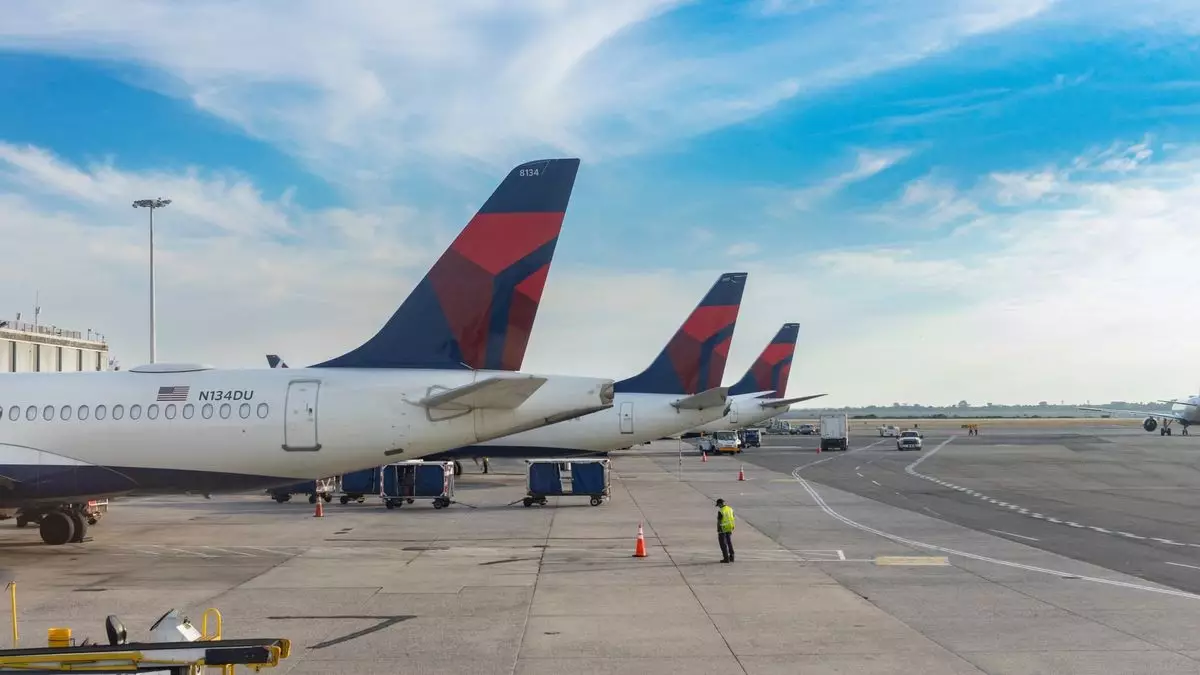Delta Air Lines recently reported a startling 30% drop in operating income for the third quarter of the year, a figure that underscores the myriad challenges facing the aviation industry. The airline attributes this drop to two critical factors: an oversaturated market and a significant operational disruption in July. The latter, caused by a technical failure linked to cybersecurity, forced Delta to cancel around 7,000 flights over five days, severely impacting customer confidence and operational efficiency.
Despite these setbacks, Delta remains cautiously optimistic. President Glen Hauenstein remarked that the balance between capacity and demand appears to be improving, which could bode well for upcoming quarters. Delta’s operating income fell to $1.4 billion this quarter compared to $1.98 billion during the same period last year, indicating the pressure the airline is under amidst rising competition and fluctuating operational circumstances.
While Delta’s operating revenue showed slight growth—an increase of 1% to reach $15.7 billion—the airline’s overall financial health was undermined by a 6% increase in operating expenses. The operational meltdown alone accounted for an estimated $500 million hit to the company’s net income, demonstrating how external factors can dramatically alter financial landscapes in an industry known for its volatility. Furthermore, an oversaturated market caused a 3% dip in revenue per passenger mile, further exacerbating Delta’s financial challenges.
Delta’s operating margin also suffered, dropping to 8.9% from 12.8% the previous year, signaling not just operational but strategic difficulties. However, the airline’s leadership is optimistic about the fourth quarter, projecting an improved operating margin of between 11% to 13%. This potential upside may stem from the anticipated rise in airfares, a factor likely influenced by the reduction of overall industry capacity.
The broader airline industry has been notably reactive to changing demand. After a summer where capacity increased by 5.8%, airlines have begun to retract their schedules to adapt to softer demand signals and declining fare prices. Data from September shows an industry-wide ticket price increase of 1.6%, hinting at a potential recovery in fare levels. Cirium’s analysis suggests that in Q4, airlines are planning only a modest 1.8% increase in capacity year-over-year, with budget carriers being particularly cautious.
Delta also plans to cautiously expand its capacity by 3% to 4% in the upcoming quarter. This calculated growth strategy reflects the airline’s intent to balance improved load factors and better fleet utilization without overly saturating the market once again.
As Delta Air Lines maneuvers through these turbulent waters, it is clear that immediate past challenges have set the stage for cautious optimism in the future. The airline’s adjusted strategies reflect an understanding of market dynamics and an attempt to enhance operational efficiency while remaining responsive to consumer demand. If Delta can effectively manage its capacity and operational challenges, it stands a good chance of regaining momentum and profitability in an often unpredictable industry.


Leave a Reply